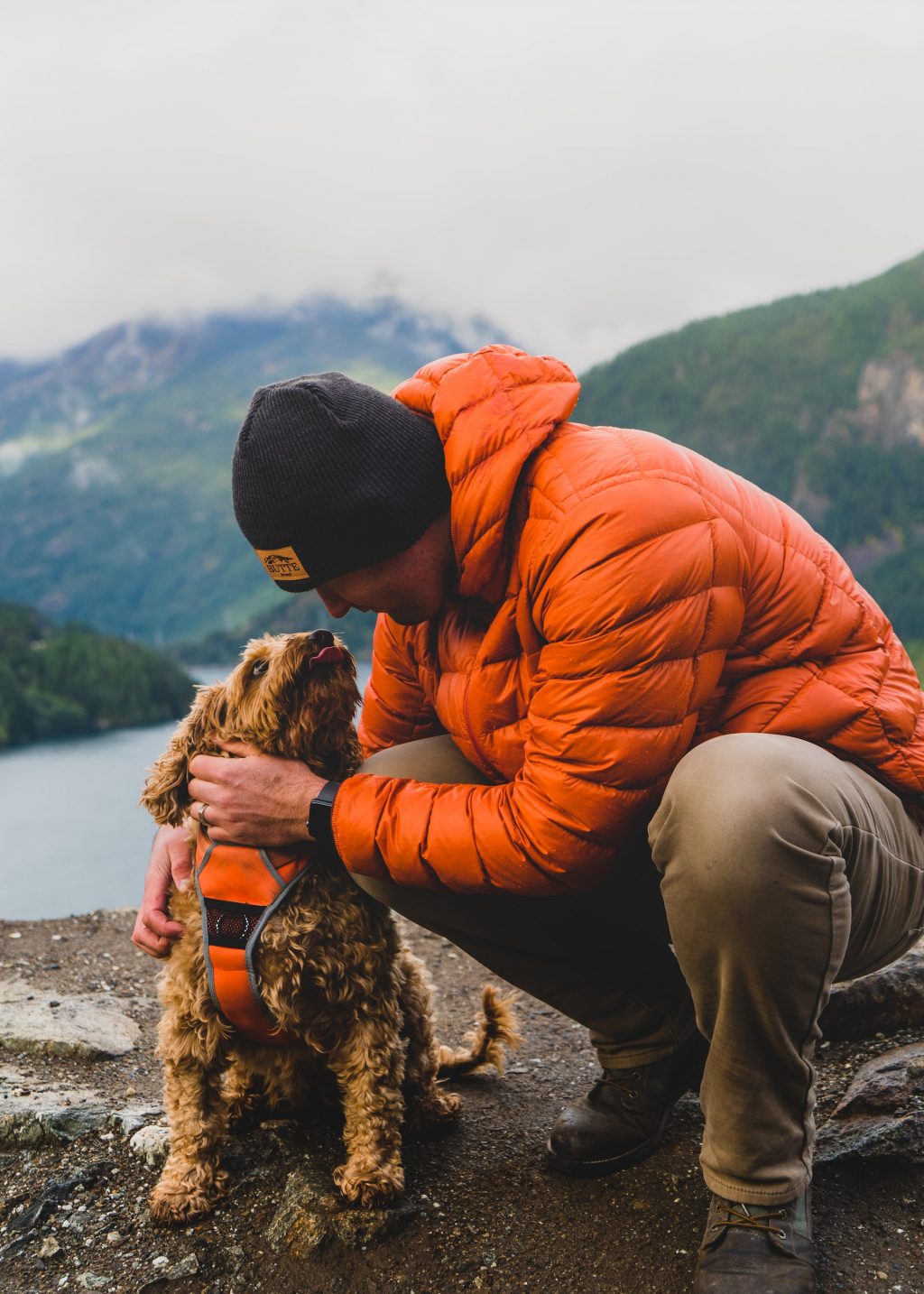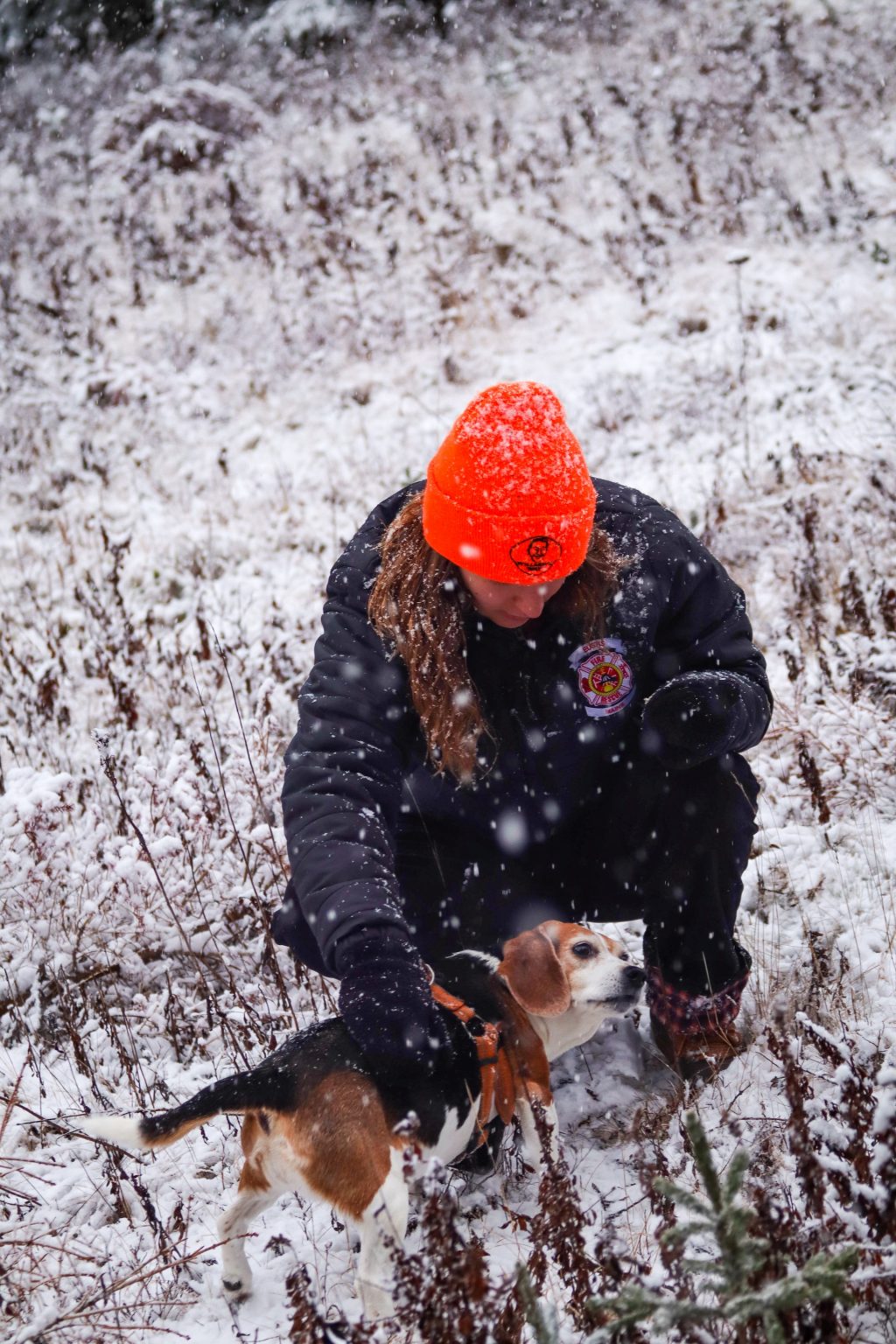Dry weather, cool temperatures, and a declining bug population make fall a popular season with hikers. But fall is also the start of hunting season in many regions across the Northeast. While some hikers find the prospect of hitting the trail with hunters in the woods intimidating, there are a handful of steps you can take to hike safely during hunting season.

Six Tips to Hike Safely During Hunting Season
Each autumn, hikers and hunters share the forest. Take these six steps to ensure your safety when hitting the trails this fall.
1. Acknowledge One Another
If you encounter a hunter while hiking, it’s a good idea to acknowledge one another. It’s polite and lets both parties know that they’re aware of each other’s presence. There’s no need to yell or make a scene; a friendly wave will suffice.
Hikers and hunters have a responsibility to share public lands. It’s also worth pointing out that fees for tags and taxes on hunting gear like ammo and arms help fund conservation. As Theodore Roosevelt—26th US President, founder of the National Wildlife Refuge System, and avid hunter—once said, “In a civilized and cultivated country, wild animals only continue to exist at all when preserved by sportsmen.”
2. Pick the Right Place to Hike
Hikers and hunters alike have a right to enjoy the woods, so avoiding popular hunting spots in season is a smart strategy to stay safe as a hiker. If you see a lot of trucks at your local trailhead on a brisk November morning, take it as a sign to steer clear or as an opportunity to explore a new area less enticing to hunters.
You don’t have to wait until you arrive at the trailhead to know what places are popular with hunters. Contact your local hiking club or land manager in advance about when hunting season starts and where it’s safe to hike during hunting season.
3. Choose the Right Trail to Hike
It’s not always possible to hike in an area without hunters. In these cases, it’s important to select the right type of trails to hike. In general, it’s a good idea to stick to well-established and high-traffic trails. Hunters are interested in game, which typically avoids areas with lots of activity and noise. In some states, hunters are even advised to eschew areas near trails. For example, New Hampshire recommends hunters not “discharge firearms within 150 feet of trails or within 300 feet of any developed recreation area.”
It’s also recommended that hikers stay on established trails during hunting season. Venturing off the beaten path and bushwhacking through thick undergrowth is a good way to get mistaken for an animal and put yourself in a precarious position.
4. Know When It’s Safe to Hike
To stay safe during hiking season, it’s vital to know when hunting season is. Deer hunting is the most popular season in the Northeast and generally extends from October to December, but it can start as early as September farther north. That said, rules and regulations vary by state and location. For example, hunting on Sundays is forbidden in Massachusetts. Similarly, much of the eastern half of New Hampshire’s Bear Brook State Park is a designated game refuge and is open only to bow hunting deer.
Choosing the right time to hike can also improve your safety. Animals, and consequently, hunters, are most active at dawn and dusk, making mid-day an optimal time to hike. It also has the added bonus of improving your visibility. Much like hikers, hunters are most active on the weekends, which is a great excuse to play hooky and go for a mid-week hike.
5. Make Yourself Visible
Wear plenty of orange and bright, non-natural, fluorescent colors every time you hit the trail during hunting season—it increases your visibility and makes it hard to mistake for a deer! The more orange the better; hats, vests, and buffs/neck gaiters are all great additions to your hiking kit during hunting season. Even at places that don’t allow hunting, it’s not a bad idea to incorporate some blaze orange into your kit. Better safe than sorry!
Seeing that hunters are most active around dusk and dawn, if hiking at those, times consider including some blaze orange accessories with reflective panels to enhance your visibility in dim light. Also, consider using a headlamp if out early in the morning or late at night.
6. Hiking With Your Dog During Hunting Season
As a dog owner, I take hunting safety for my pup as seriously as I do for myself. Adorn your dog in blaze orange to prevent them from being mistaken for a deer. This is particularly true for mid- to large-sized dogs with darker fur. An orange jacket or vest is a good starting point while a bright-colored bandana further enhances visibility.
Another good tip is to place a bell—a bear bell works great—on your dog’s collar. It lets hunters (and you) know where the dog is and is a sound that isn’t associated with wild game. Along those lines, it’s not a bad idea to keep your dog leashed during hunting season. It prevents them from running through leaves, charging through brush, and ultimately confusing hunters.

Aim to Stay Safe During Hunting Season
It’s not that difficult for hikers and hunters to coexist for the few weeks of hunting season. Know where and when to hike, dress appropriately, and look out for your four-legged friend to ensure you stay safe this season.
Mike Spadea
Mike began working at Eastern Mountain Sports when he was just 15 years old. There he met a community of mentors who helped nurture his love of nature and introduced him to various new outdoor activities. Today, Mike serves on his local conservation commission and continues to share his knowledge of the outdoors with others.
Related Posts
April 2, 2024
10 Tips for Mountain Biking Etiquette During Mud Season
One rough spring could ruin the…




